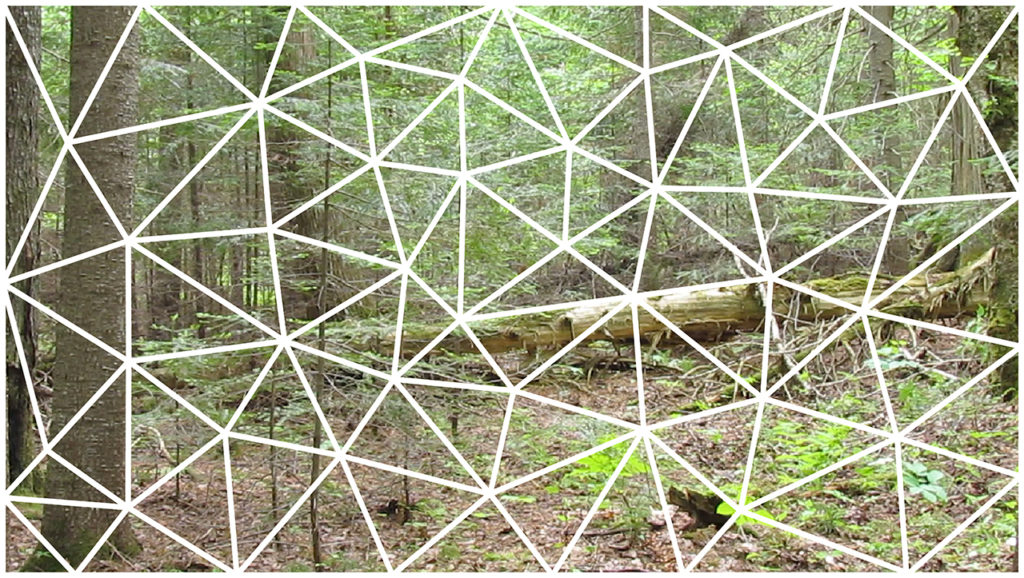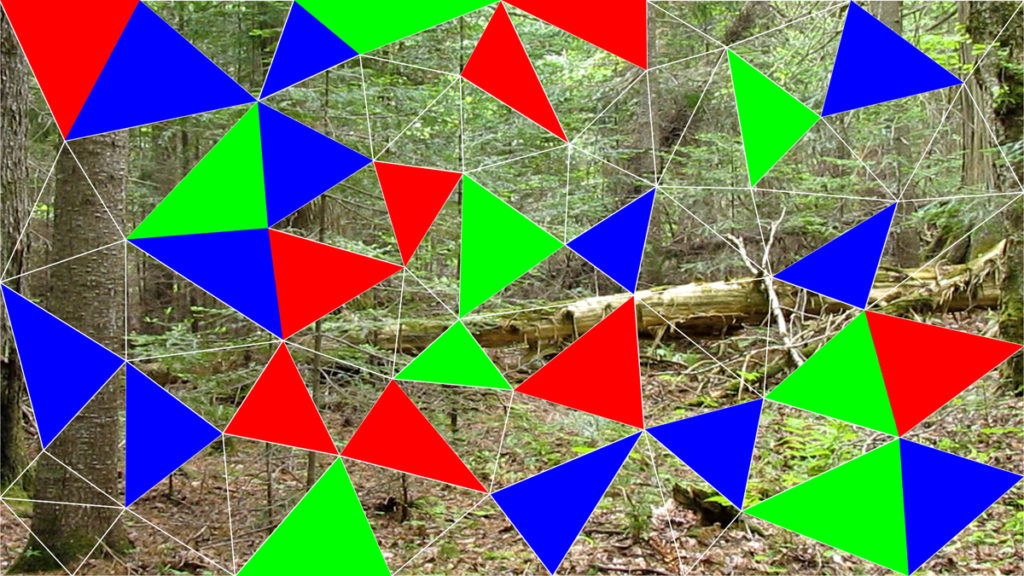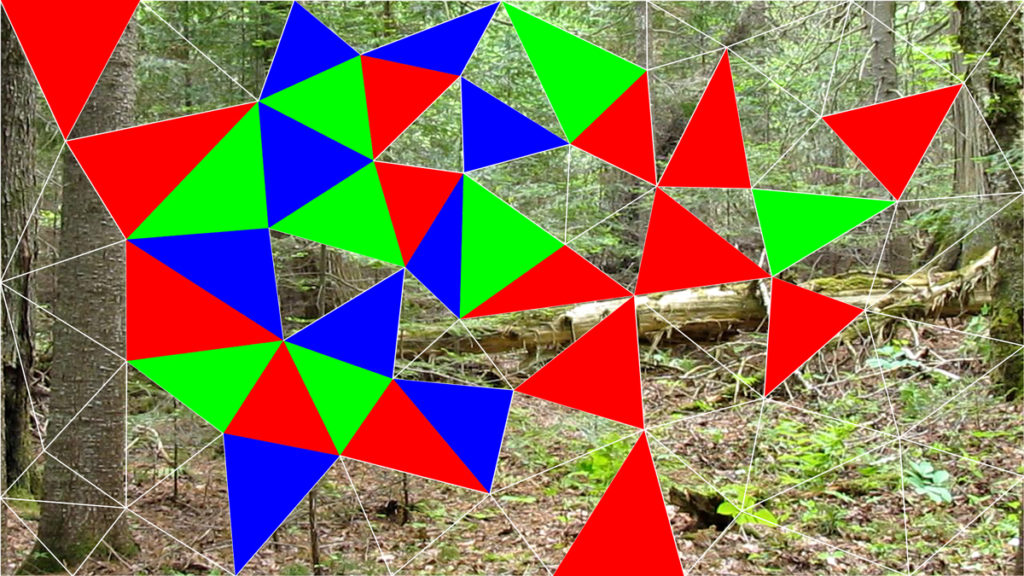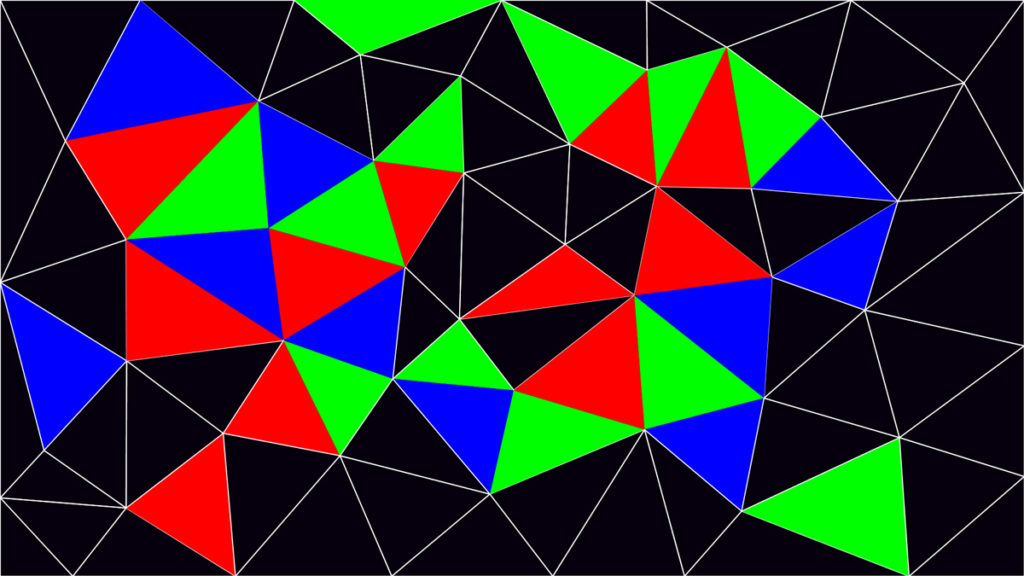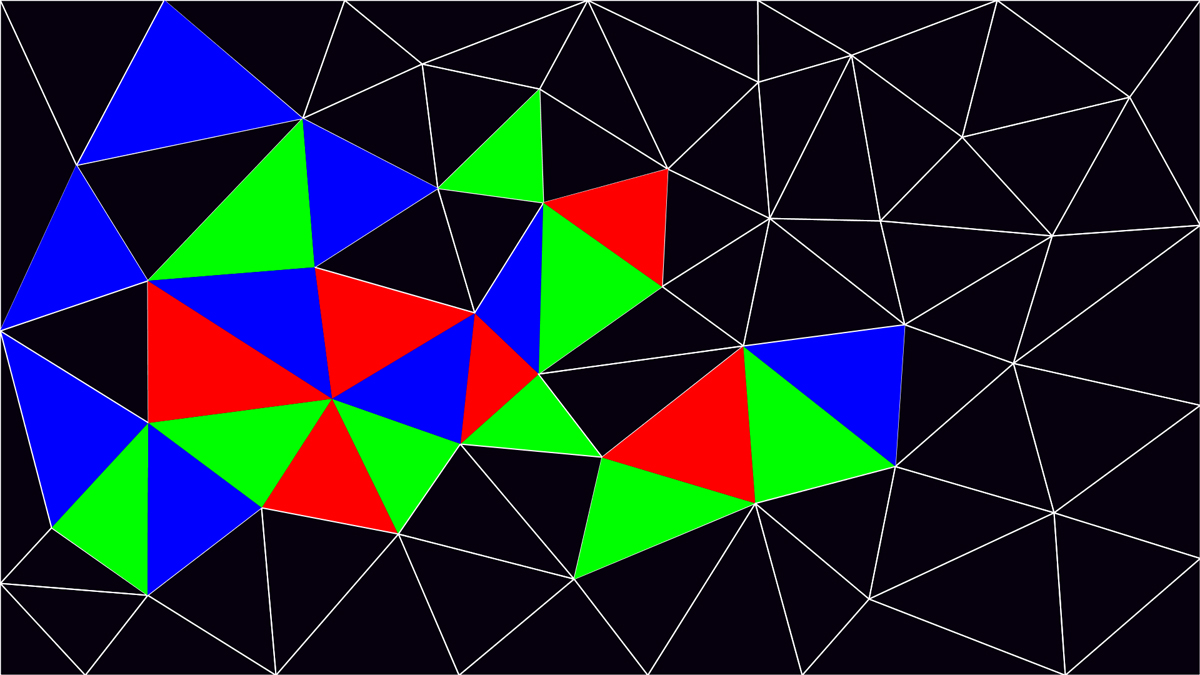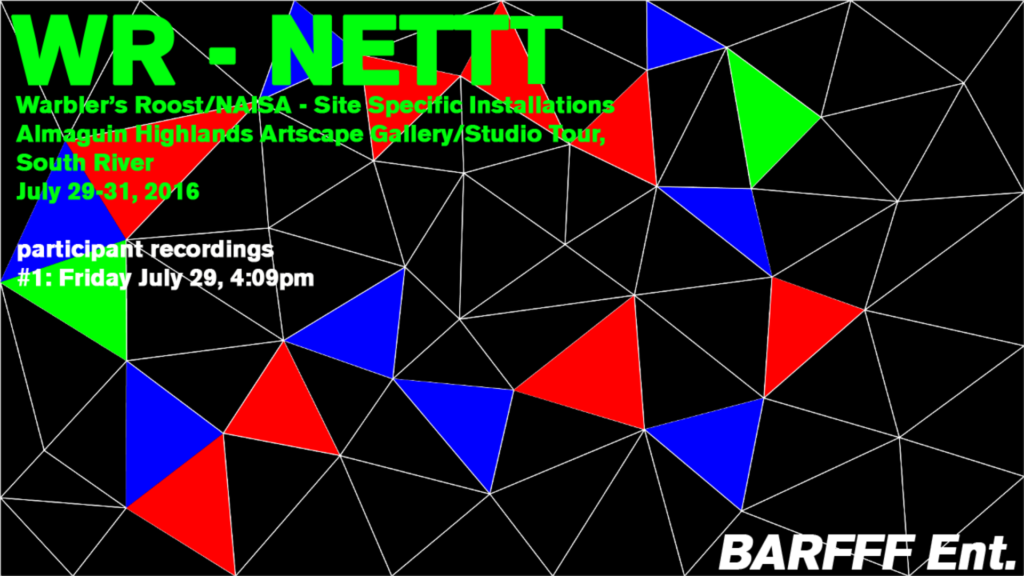July 29-31, 2016, Warbler’s Roost, South River
in association with NAISA
for the Almaguin Highlands Arts Council Artscape Studio and Gallery Tour
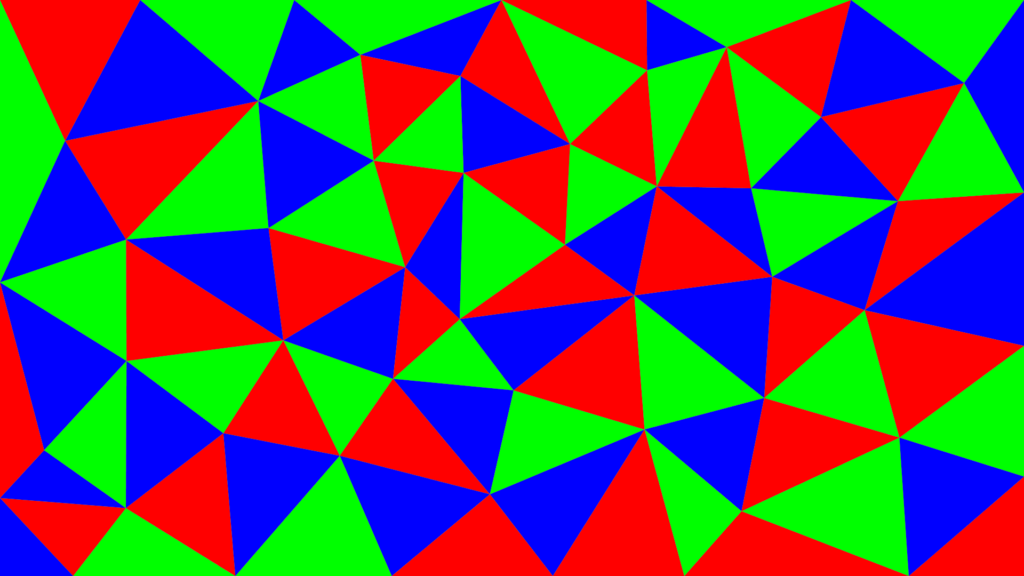
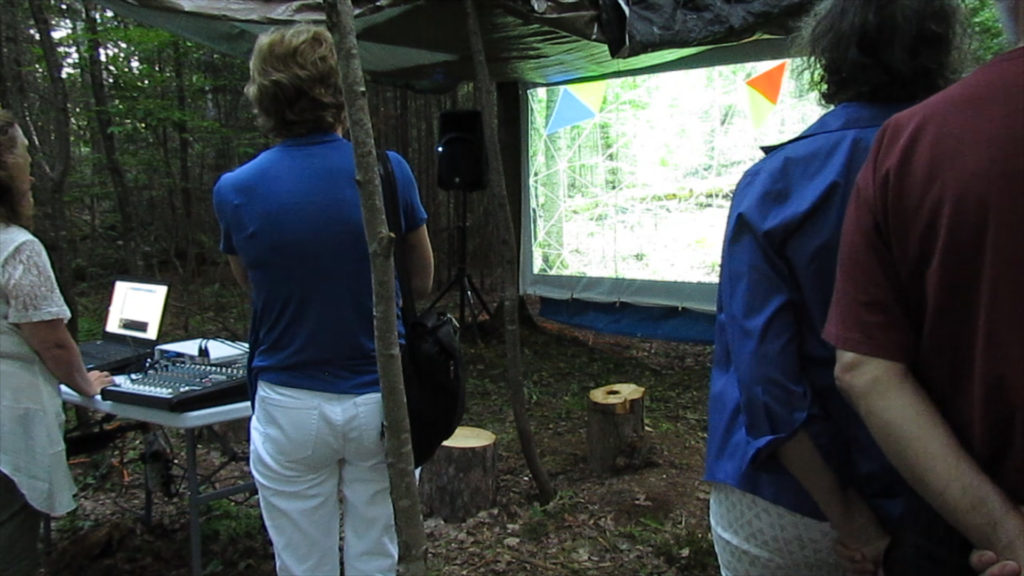
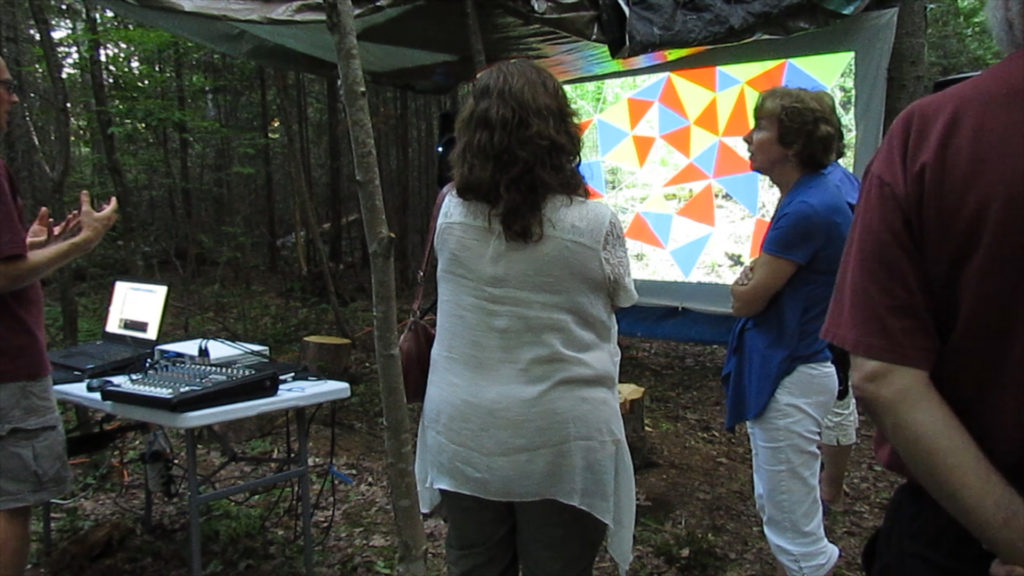
Facebook event post:
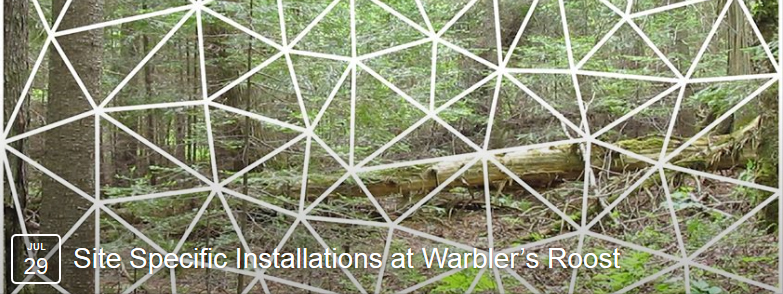
about the installation
I am using art as the medium to study living presence, creativity, consciousness. The field of triangles you see above and below is a form I call the NETTT. It is an elemental structure inspired by computer graphics (triangle mesh) and mathematics (graph theory) used to encode living presence in a formal and precise (numerical) way.
I began this project by recording a video of the area of forest chosen for this installation. From that I selected a scene and triangulated it – the white triangle mesh you see superimposed over top. This encodes the living presence of this environment – its spiritual content – into a precise structure, one that can be easily represented by a table of data. The data generated in this installation was 1-2KB per recording – small – that’s good.
What can be done with this data is an open question and this is where I am directing my attention and what I am experimenting with. Triangulating or ‘rendering’ scenes has been an approach I have had for a while now. It has been used in almost every project, show, and installation that I have created and hosted in the past few years. See AGP and the special special special show for a couple of good examples. In this project, however, I have gone a step further – the NETTT has now become an instrument with which people may play the living essence of a subject or scene.
Each of the triangles has an associated sound and colour. One of three colours – red, green, blue (RGB – one of the two fundamental colour spaces in computer graphics, the other is CMYK). In this installation, there were two different sample collections that I could change freely: a) – simple synthesized tones (FM) of varying pitches in sets of three, one for each colour (so for the collection of triangles of a single colour there will be only one sample assigned to all of them), and b) – a composition that I created specifically for this event broken up into eighty-eight sections – one for each triangle.
Participants were invited to play the NETTT; the left mouse button activated a triangle, filling it with its corresponding colour and triggering its corresponding sample. I recorded the interaction so that it could be played back. While particpants were ‘playing the NETTT’, I was changing the sample banks spontaneously to suit the situation so it was a collective effort. The recordings are presented below – ten over a period of three days plus two of my own that I recorded a month later.
At the event, the triangle mesh superimposed over the scene – the interface that people were playing – was projected onto a screen in the same area from which the initial recording was taken so that it was somewhat seamless – as if you were playing the actual forest – a lo-fi form of virtual reality – wilderness and technology.
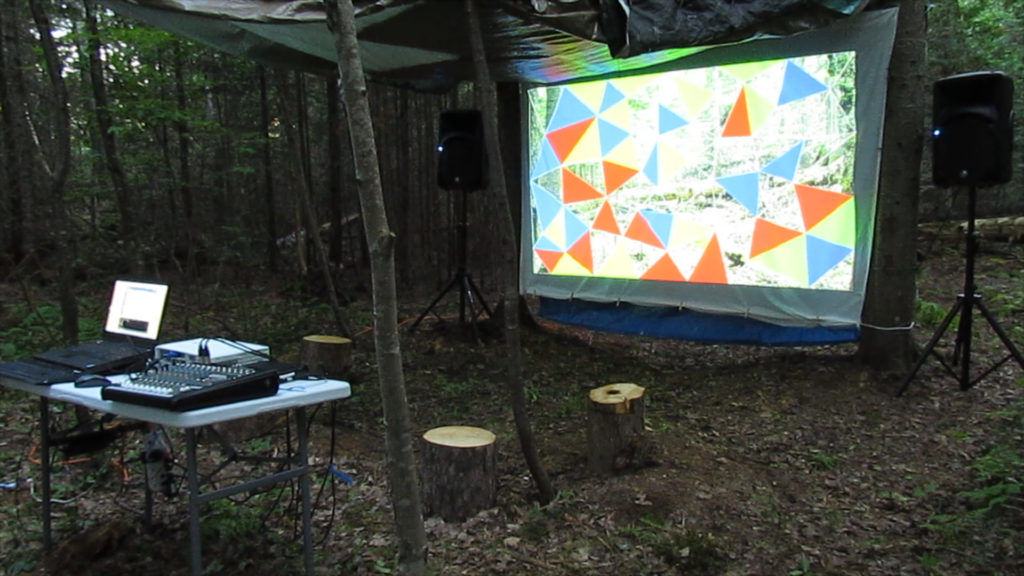
The results are recordings of people’s activity, what I like to call ‘figures of consciousness’ – the creative act reduced to a simplified form: brief audio/visual animations created by the participants. The scientific approach reduces variables so that what remains is a manageable and precisely observable range of activity. One central interest I have is in identifying different aspects of personality, different moods or ‘atmospheres’ cast by different subject matter; people (portraits) and environments (landscapes). These moods are contained within the data recorded from participants. I am exploring the expression of living presence through gesture, the communication of meaning, by the accumulation, study, and manipulation of the data acquired through this interface. I am interested in how these expressions of living presence connect to different subject matter. These connections serving as a vocabulary, a language used to program environments and perhaps experience itself. This is only one of many possibilities though.
I have been moving in this direction for a number of years and each new project builds cumulatively on previous work. Though certainly the rationality of science is employed in this project, I do not exactly know where all aspects of this work is going – still a surrender to artistic inspiration, wherever it may lead (as I would do with painting).
The videos presented on the linked page are playbacks of the recordings made by participants during this event. Scientific visualization as art. Diagram art. They serve as the raw data upon which experiments may be performed, information and patterns recognized, messages sent and received. Even in this simplified form, or perhaps because of it, the differences in people’s approaches, mentality, tendencies, personalities, habits, states, moods, character are strikingly clear. Clearly each of the recordings have a different character corresponding to the different personalities who performed them – the rate at which the triangles are activated, whether all the triangles have been activated or not, some drew pictures, others followed a very clear path through them.
In this piece I am just presenting the data as animations so there is no interpretation or manipulation. I am particularly seeking ways to do this mathematically/computationally registering these differences using, for example, procedures developed in graph theory and network theory – that is form that neural nets are based on. Creative living presence expressed and studied through a formal structure – an architecture of consciousness. This is starting to sound more and more like artificial intelligence, but the point is not to recreate life or to have something spontaneously generate its own form. The point is to study and reveal aspects of our own living presence – to see hidden aspects. Just to see them I guess. They’re cool.
This project consists of the original field recording (video), the custom software from which the recordings were made (NETTTBlaster), computer animations (presented on Vimeo), stills-images, paintings, audio (presented as an album on Bandcamp) and an expanding collection of data.
Essentially I am data mining the audience so that I may study their personalities. 🙂
I would like to thank Darren Copeland and Nadene Theriault-Copeland for their hospitality, and for inviting me to participate in this excellent show. There were other installations by Christine Charette, Yves Daoust, Darren Copeland and Dan Tapper, and an evening performance by the Roots Collective to start the weekend. Everything contrasted in such a way, to such a degree that each presentation illuminated all the others. It was a really great show.
